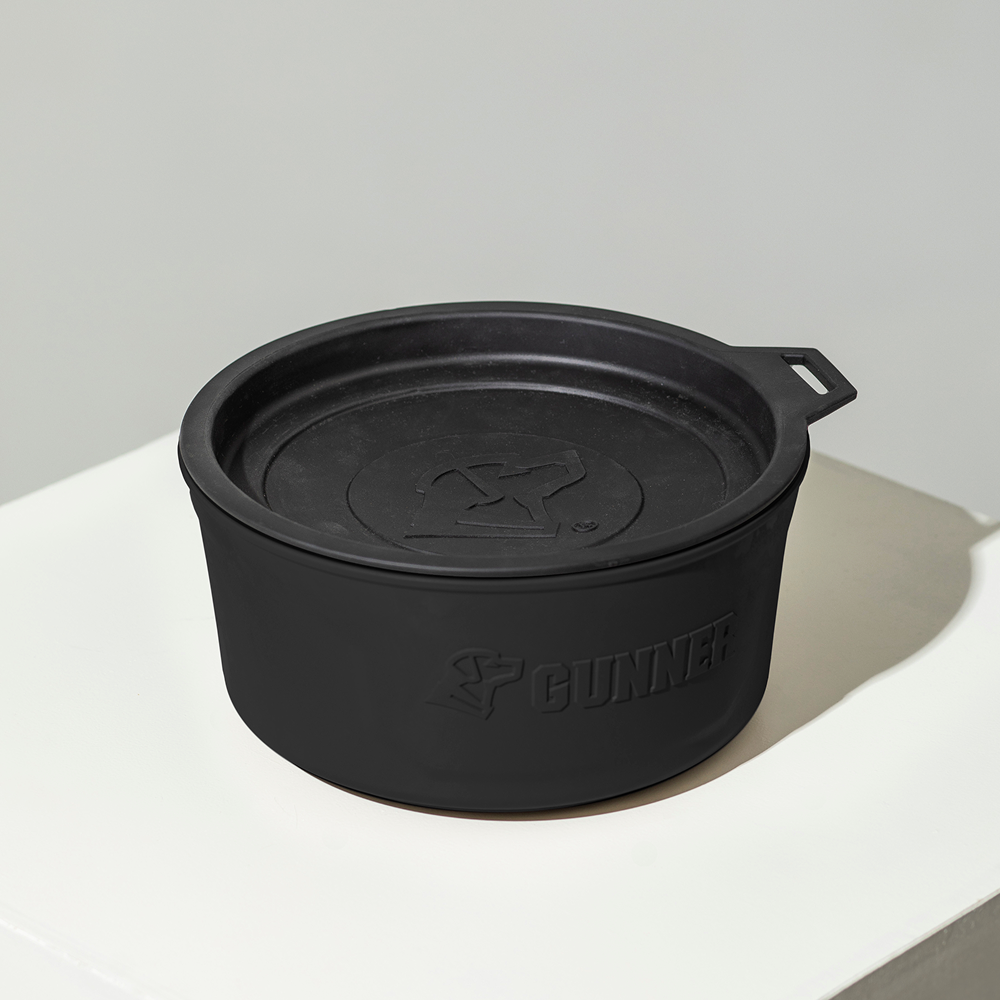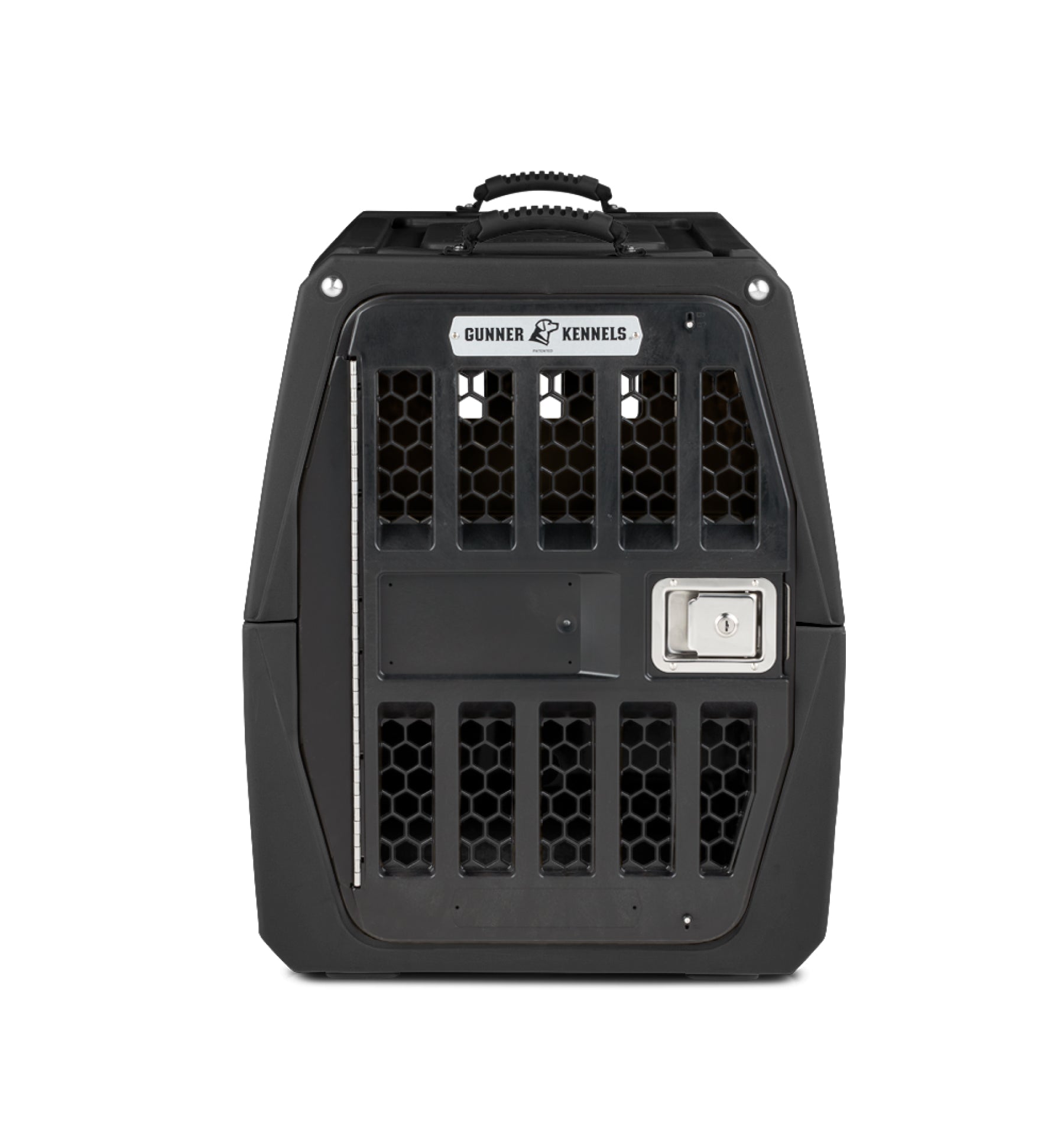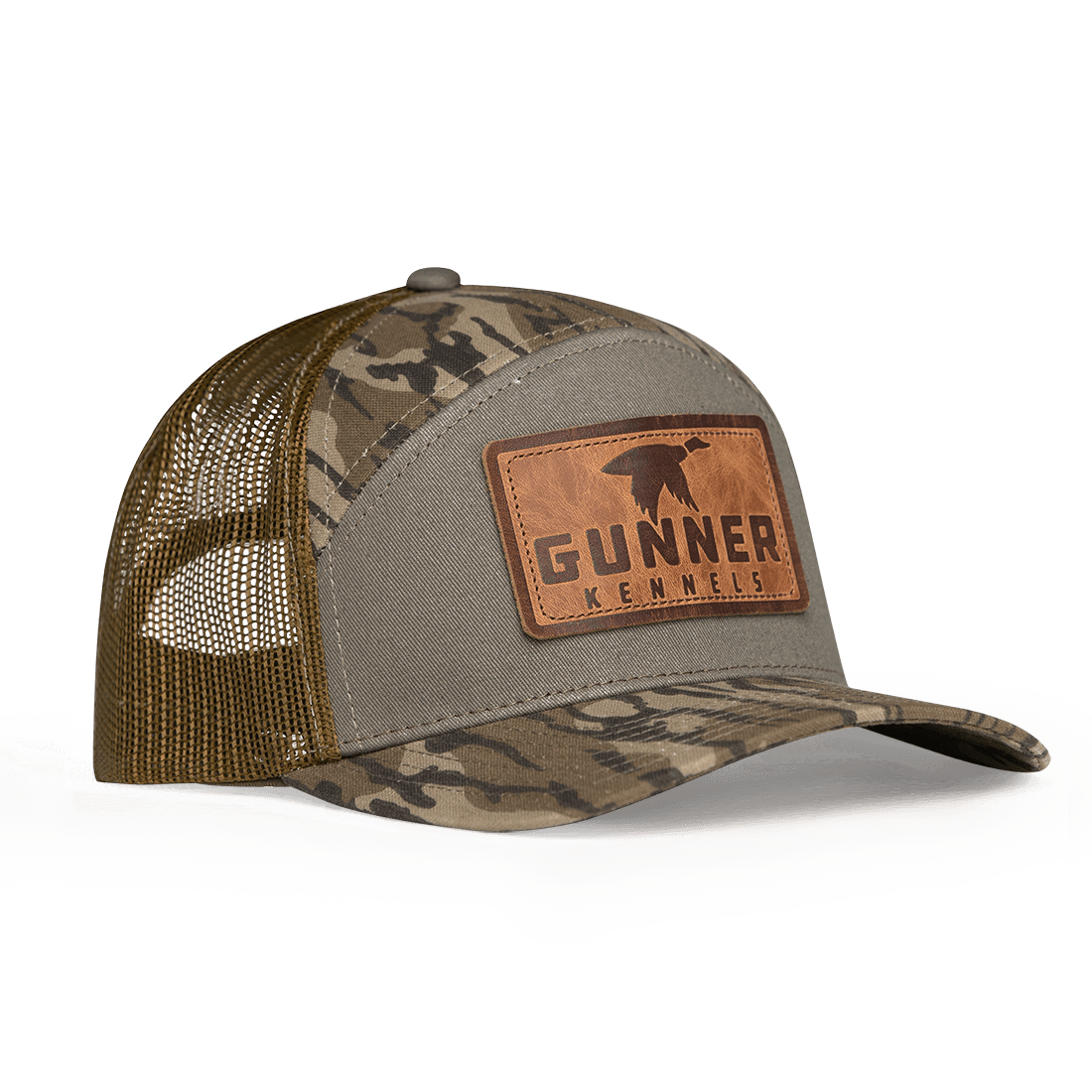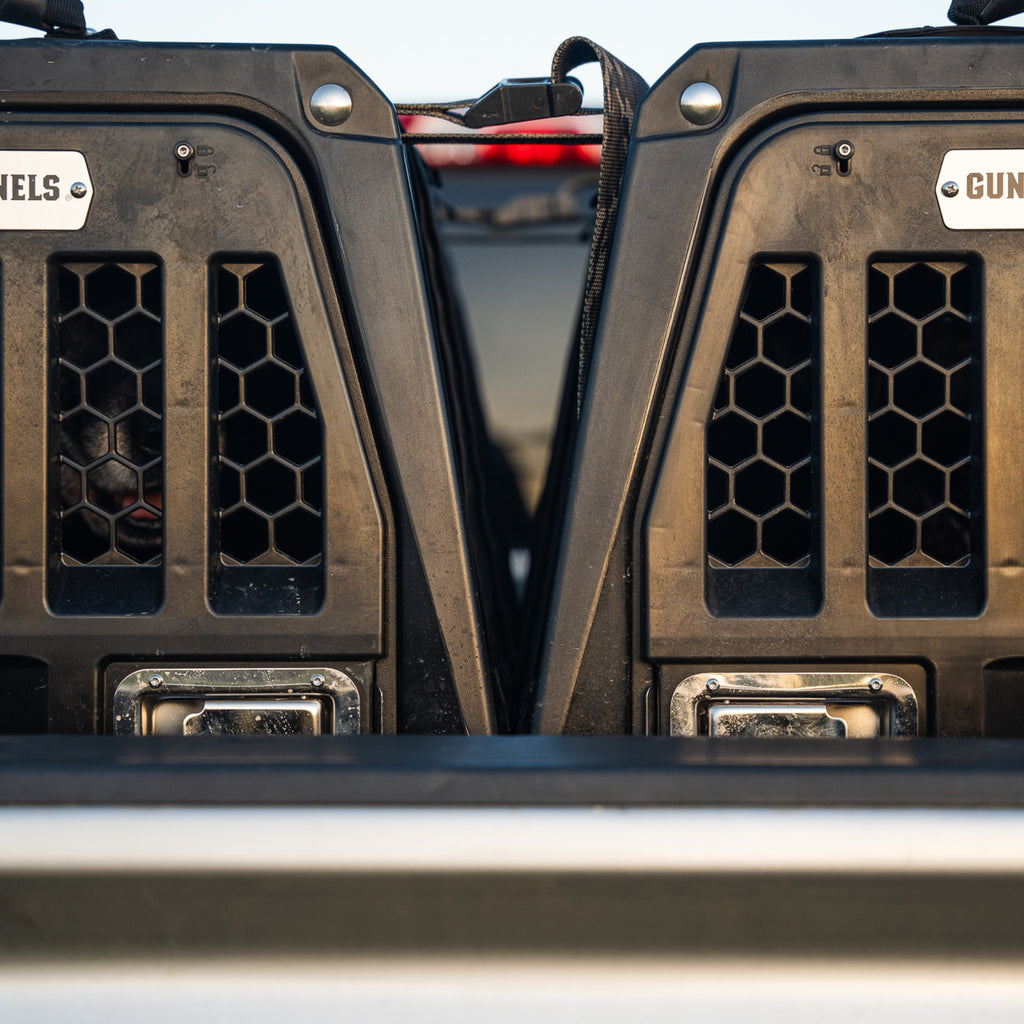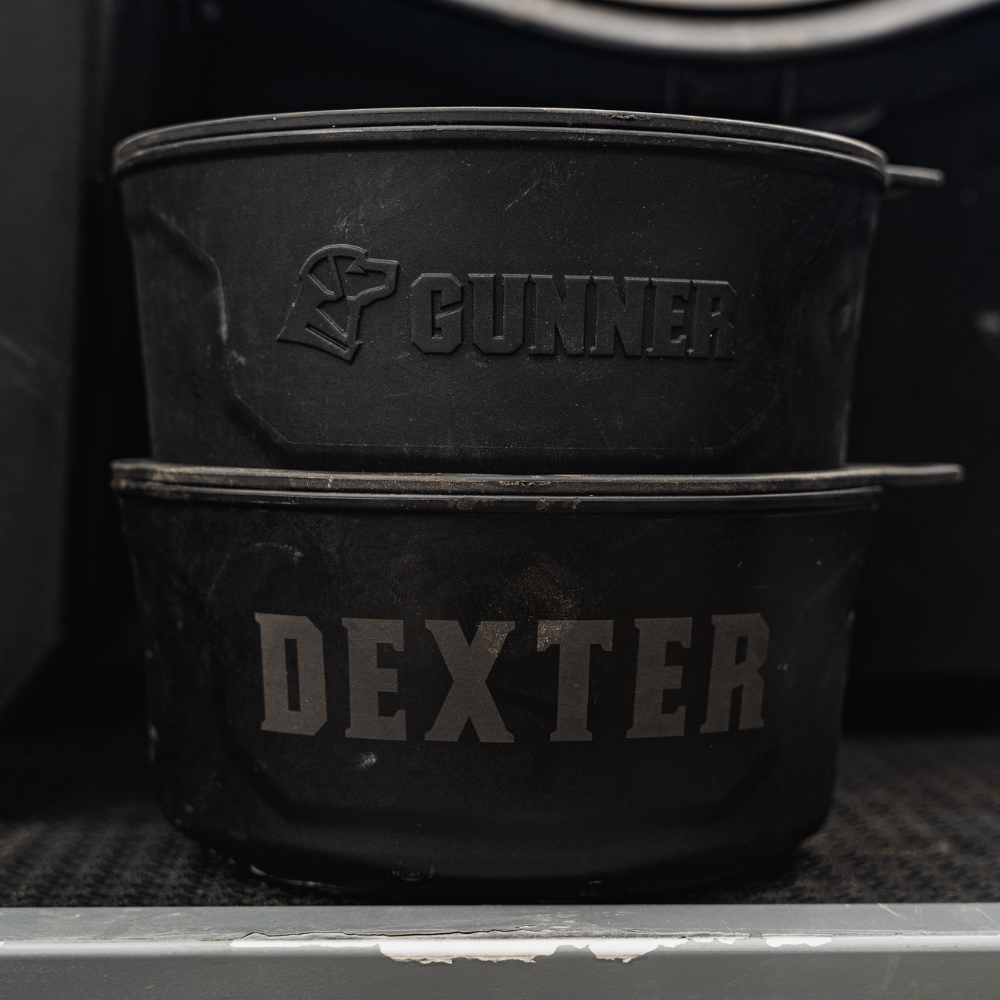How to Go Fishing With Your Dog
3 mins read
Oftentimes, going fishing means leaving your gun dog gear at home in exchange for a rod and tackle, but there’s no reason your hunting buddy needs to exclusively be your hunting buddy.
Black
The safest dog crate, proven to save K9 lives. The only double-walled kennel on the market, providing 2x the impact protection & superior thermal properties. Made in America.
The safest dog crate, proven to save K9 lives. The only double-walled kennel on the market, providing 2x the impact protection & superior thermal properties. Made in America.
GUNNER's Tie-Down Strap Kit securely anchors the kennel to your vehicle with an extra-thick custom cambuckle for additional break strength & heavy-duty material that ensures reliable performance year-round. The only straps we recommend for 5 Star Crash Test certified safety.
GUNNER's Tie-Down Strap Kit securely anchors the kennel to your vehicle with an extra-thick custom cambuckle for additional break strength & heavy-duty material that ensures reliable performance year-round. The only straps we recommend for 5 Star Crash Test certified safety.
Our Performance Pad tough-skin insert provides a 3/4” pad of cushion for your crate, as well as waterproof comfort for tired joints. Made in America.
Our Performance Pad tough-skin insert provides a 3/4” pad of cushion for your crate, as well as waterproof comfort for tired joints. Made in America.
Designed to mount to your GUNNER, our powerful Fan Kit is weatherproof, dustproof, and all-around foolproof. Your dog will thank you for this one.
Designed to mount to your GUNNER, our powerful Fan Kit is weatherproof, dustproof, and all-around foolproof. Your dog will thank you for this one.
Black
Designed for the home and ready for the road with our spill-proof lid: the GUNNER Dog Bowl is rust proof, slip proof & impact resistant. Made in America.
Designed for the home and ready for the road with our spill-proof lid: the GUNNER Dog Bowl is rust proof, slip proof & impact resistant. Made in America.
MORE LIKE THIS
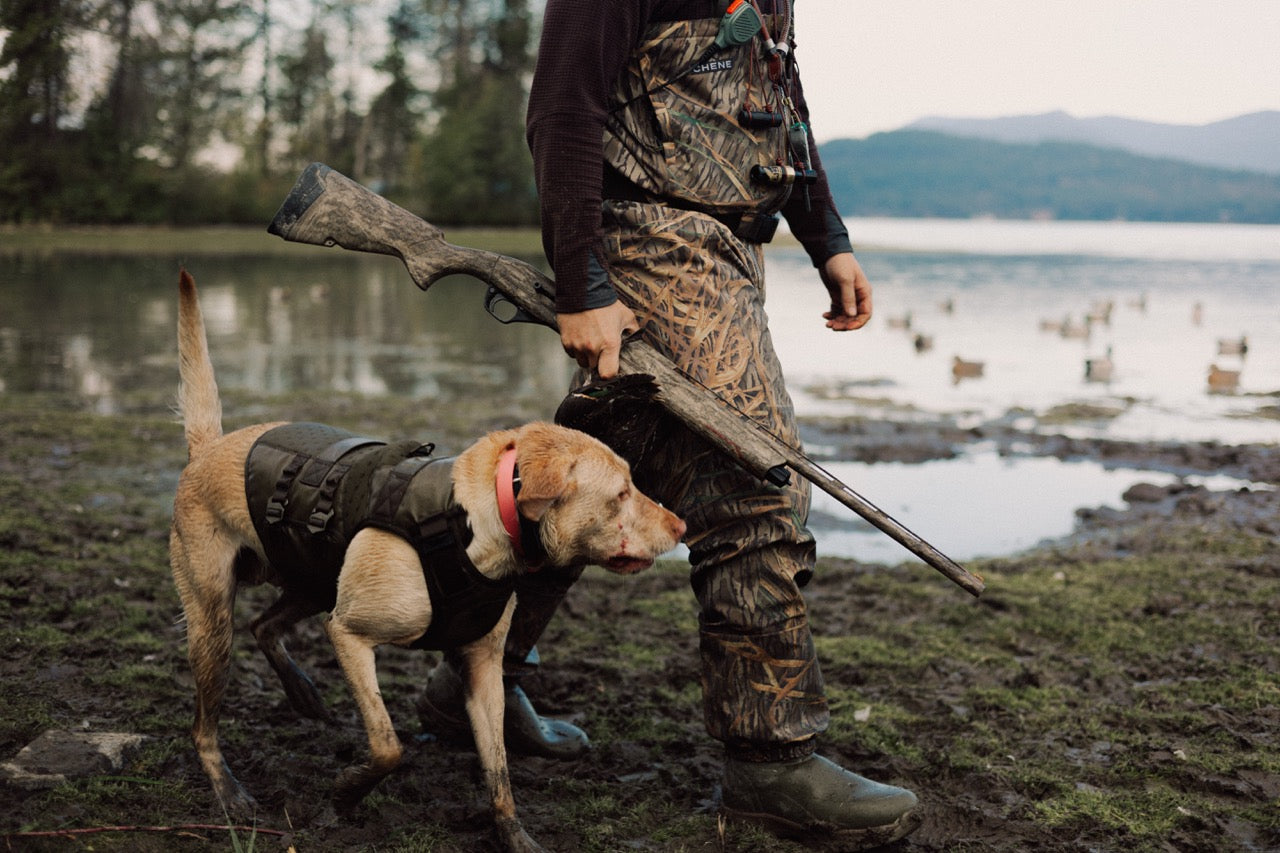
Your Cart

Looks like your cart is empty.
Let us help you find what you’re looking for!
G1™ KENNEL
The market's safest dog crate, proven to save. The only double-walled kennel on the market that provides 2x the shock protection & superior thermal properties. Made in America.The market's safest dog crate, proven to save. The only double-walled kennel on the market that provides 2x the shock protection & superior thermal properties. Made in America.

HOMESTEAD DOG BED
The Homestead Dog Bed is breathable, washable, and overbuilt to GUNNER-grade.

GUNNER FOOD CRATE
Market's best dog food storage container & our highest-rated product. Airtight, waterproof.

GUNNER DOG BOWL
Spill proof, rust proof, slip proof & impact resistant. Personalize it with your dog's name.
